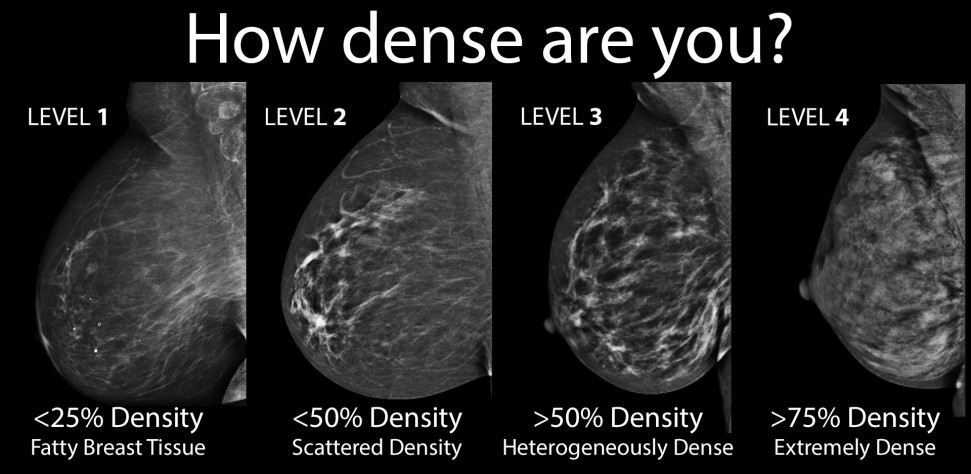November 9, 2015 - Mammographic density (MD) was positively associated with risk of invasive tumors across all ages, according to a recently published study.1
Understanding whether mammographic density (MD) is associated with all breast tumor subtypes and whether the strength of association varies by age is important for utilizing MD in risk models.
The authors collected data pooled from six studies including 3414 women with breast cancer and 7199 without who underwent screening mammography. They assessed percent MD from digitized film-screen mammograms using a computer-assisted threshold technique. The authors used polytomous logistic regression to calculate breast cancer odds according to tumor type, histopathological characteristics, and receptor (estrogen receptor (ER), progesterone receptor (PR), human epidermal growth factor receptor (HER2)) status by age (<55, 55-64, and >=65 years).
The MD was positively associated with risk of invasive tumors across all ages, with a two-fold increased risk for high (>51%) versus average density (11-25%). Women ages <55 years with high MD had stronger increased risk of ductal carcinoma in situ (DCIS) compared to women ages 55--64 and >=65 years (Page-interaction=0.02). Among all ages, MD had a stronger association with large (>2.1 cm) versus small tumors and positive versus negative lymph node status (P's<0.01). For women ages <55 years, there was a stronger association of MD with ER-negative breast cancer than ER-positive tumors compared to women ages 55-64 and >=65 years (Page-interaction=0.04). MD was positively associated with both HER2-negative and HER2-positive tumors within each age group.
The authors concluded that MD is strongly associated with all breast cancer subtypes, but particularly tumors of large size and positive lymph nodes across all ages, and ER-negative status among women ages <55 years, suggesting high MD may play an important role in tumor aggressiveness, especially in younger women.

Image: Dense breast tissue is comprised of less fat and more connective tissue which appears white on a mammogram. Cancer also appears white on a mammogram thus tumors are often hidden behind the dense tissue. As a woman ages, her breasts usually become more fatty.2
References:
- Bertrand KA, Tamimi RM, Scott CG, et al. Mammographic density and risk of breast cancer by age and tumor characteristics. Breast Cancer Res. 2013 Nov 4;15(6):R104. doi: 10.1186/bcr3570.
- WHAT IS “DENSE” BREAST TISSUE AND WHY SHOULD I BE AWARE? Digital Mammography Specialists. http://dmsrad.com/3d-automated-breast-ultrasound-abus/




